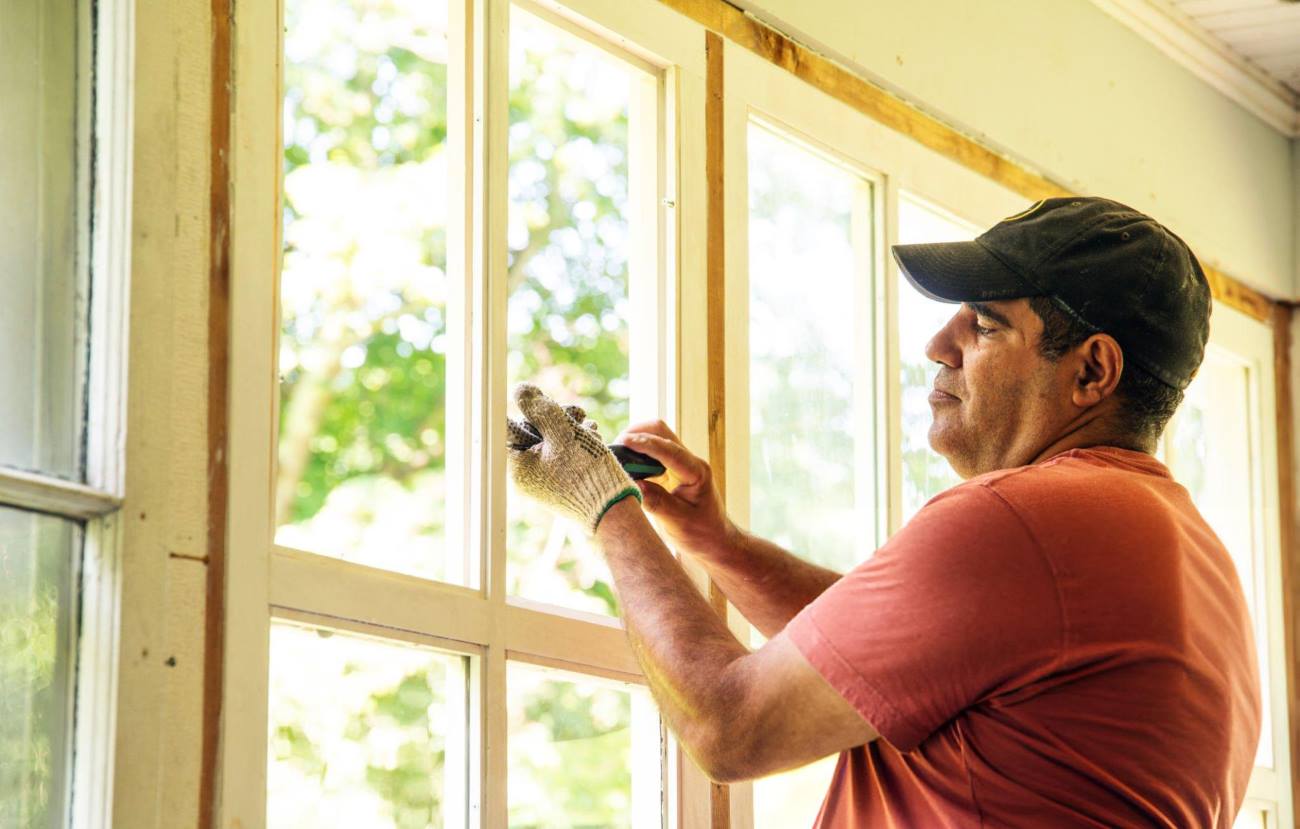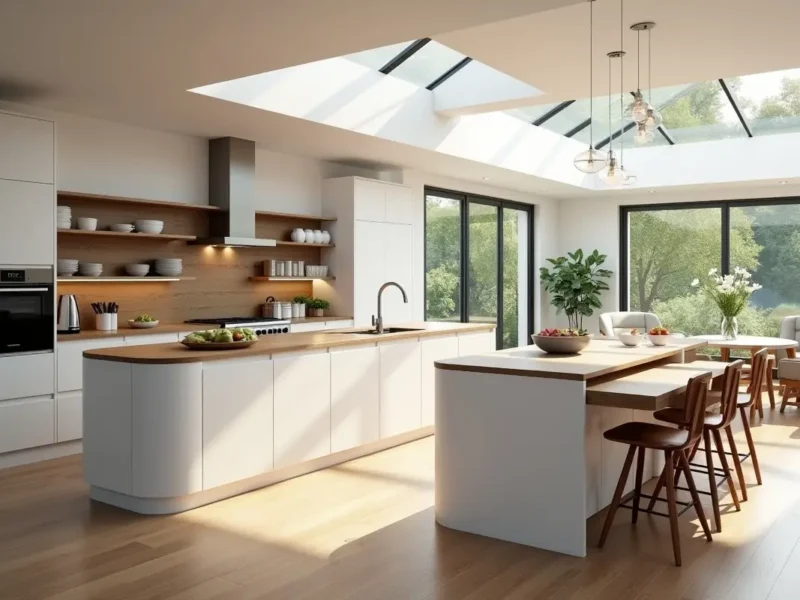Replacement windows play a crucial role in our homes, providing natural light, ventilation, and protection from the elements. However, like all components of a house, windows have a finite lifespan. Recognizing signs it’s time to replace your windows is essential for maintaining a comfortable and energy-efficient home.
In this guide, we’ll explore the key indicators that suggest your windows may be due for an upgrade, helping you make an informed decision about window replacement.
Impact of Aging Windows on Your Home
Aging windows can develop issues affecting functionality and efficiency, such as difficult operation, drafts, and poor insulation. These problems compromise comfort and increase energy bills, as heating and cooling systems work harder to regulate indoor temperature.
Moreover, aging windows can reduce your home’s curb appeal and value, while also posing security risks due to potential vulnerabilities. Recognizing the signs for window replacement allows you to address these issues proactively and enjoy the benefits of modern, efficient windows.
Visual Cues: Assessing Window Condition
One of the most straightforward ways to determine if your windows need replacement is through visual inspection. Take a close look at your windows, both inside and outside, to identify any visible signs of wear and tear. Here are some key visual indicators to watch for:
Cracked or Chipped Glass
Examine the glass panes for any cracks, chips, or other visible damage. Even small cracks can compromise the window’s integrity and energy efficiency. While minor damage might be repairable, extensive or multiple cracks often necessitate full window replacement.
Warped or Rotting Frames
Inspect the window frames for any signs of warping, rotting, or decay. This is particularly important for wooden frames, which are more susceptible to moisture damage. Warped or rotting frames can lead to air leaks and water infiltration, potentially causing further damage to your home’s structure.
Condensation Between Panes
If you notice foggy patches or water droplets between the glass panes of double or triple-glazed windows, it’s a clear sign that the seal has failed. This compromises the window’s insulating properties and can lead to further deterioration if left unaddressed.
Peeling Paint or Visible Gaps
Look for peeling paint around the window frame or visible gaps between the frame and the surrounding wall. These issues can indicate that the window is no longer properly sealed, allowing air and moisture to penetrate.
Faded or Discolored Areas
Check for any fading or discoloration on curtains, carpets, or furniture near windows. This can be a sign that your windows lack adequate UV protection, allowing harmful rays to damage your interior furnishings.
Functional Issues: When Windows Fail to Perform
Beyond visual cues, pay attention to how your windows function on a day-to-day basis. Operational problems can be strong indicators that replacement is necessary. Consider the following functional issues:
Difficulty Opening or Closing
Windows that are hard to open, close, or lock may have balance issues or damaged hardware. While some operational problems can be fixed with repairs, persistent difficulties often signal the need for replacement.
Drafts and Air Leaks
Place your hand near the edges of closed windows to feel for any air movement. Drafts indicate that your windows are no longer providing an adequate seal, allowing outside air to enter and conditioned air to escape.
Excessive Noise Penetration
If you notice an increase in outside noise levels when your windows are closed, it could mean that your windows are no longer providing sufficient sound insulation. Modern windows with multiple panes and specialized glass can significantly reduce noise transmission.
Condensation or Frost Build-up
Excessive condensation or frost on the interior of your windows during cold weather can indicate poor insulation. While some condensation is normal, persistent moisture can lead to mold growth and other issues.
Energy Efficiency Concerns: The Hidden Cost of Old Windows
One of the most compelling reasons to consider window replacement is the potential for improved energy efficiency. Outdated or poorly functioning windows can significantly impact your home’s energy consumption. Here are some signs that your windows may be costing you in terms of energy efficiency:
Rising Energy Bills
If you’ve noticed a steady increase in your heating and cooling costs without a corresponding change in energy rates or usage patterns, your windows could be the culprit. Inefficient windows allow heat to escape in winter and enter in summer, forcing your HVAC system to work harder.
Uneven Indoor Temperatures
Do you find that certain rooms or areas near windows are consistently colder or warmer than the rest of your house? This temperature disparity can indicate that your windows are not effectively insulating your home.
Cold Glass Surfaces
During winter, touch the interior surface of your windows. If they feel cold to the touch, it suggests that your windows are not providing adequate insulation against outside temperatures.
Visible Gaps or Cracks
Inspect the area where your windows meet the frame and where the frame meets the wall. Any visible gaps or cracks can allow air to leak in and out, compromising your home’s energy efficiency.
Safety and Security: Protecting Your Home
Windows play a crucial role in your home’s security system. Outdated or damaged windows can be vulnerable points for intruders. Consider these security-related factors when assessing your windows:
Outdated Locking Mechanisms
Older windows may have simple, easily defeated locks. Modern windows often feature multi-point locking systems that provide enhanced security.
Cracked or Weakened Glass
Windows with cracked or weakened glass are more susceptible to break-ins. Upgrading to windows with impact-resistant glass can improve your home’s security.
Loose or Damaged Frames
Window frames that are loose or damaged can be easier for intruders to manipulate. Sturdy, well-installed frames contribute to overall window security.
Single-Pane Windows
If your home still has single-pane windows, replacing them with double or triple-pane options can not only improve energy efficiency but also enhance security.
Comfort and Livability: Enhancing Your Home Environment
Windows significantly impact the overall comfort and livability of your home. If you’re experiencing any of the following issues, it might be time to consider window replacement:
UV Damage to Furnishings
Have you noticed fading or discoloration on furniture, carpets, or artwork near windows? This could indicate that your current windows lack adequate UV protection.
Excessive Glare
If certain rooms become uncomfortably bright at specific times of day, new windows with low-E coatings can help reduce glare while still allowing natural light to enter.
Poor Ventilation
Windows that don’t open properly or lack adequate ventilation options can lead to stuffy, uncomfortable indoor environments. Modern windows offer various ventilation features to improve air circulation.
Condensation Issues
Persistent condensation on windows can lead to mold growth and other moisture-related problems. New, properly installed windows can help mitigate these issues.
Aesthetic Considerations: Updating Your Home’s Look
While functionality is crucial, the appearance of your windows also plays a significant role in your home’s overall aesthetic. Here are some aesthetic reasons to consider window replacement:
Outdated Styles
If your windows no longer match your home’s architectural style or your personal taste, replacement can provide an opportunity to update your home’s look.
Faded or Discolored Frames
Sun exposure and weathering can cause window frames to fade or discolor over time, detracting from your home’s appearance.
Mismatched Windows
If you’ve replaced some windows in the past but not others, you may have a mismatched look. Replacing all windows can create a cohesive appearance.
Limited Design Options
Older windows may lack the design versatility of modern options. New windows offer a wide range of styles, colors, and features to complement your home’s architecture.
Maintenance and Repair History: When Upkeep Becomes Overwhelming
The maintenance history of your windows can provide valuable insights into whether replacement is necessary. Consider these factors:
Frequent Repairs
If you find yourself constantly repairing your windows, it may be more cost-effective in the long run to invest in new, low-maintenance windows.
Difficulty Finding Replacement Parts
For older or custom windows, finding replacement parts can become increasingly challenging and expensive over time.
Ongoing Maintenance Requirements
If your current windows require frequent painting, sealing, or other maintenance tasks, newer, low-maintenance options might be a worthwhile investment.
Escalating Repair Costs
As windows age, repair costs often increase. At a certain point, replacement becomes more economical than continued repairs.
Environmental Factors: Adapting to Your Climate
The climate in which you live can significantly impact the lifespan and performance of your windows. Consider these environmental factors when assessing your windows:
Extreme Temperature Fluctuations
If you live in an area with dramatic temperature swings, your windows may wear out faster due to expansion and contraction.
High Humidity or Coastal Environments
Homes in humid or coastal areas may experience accelerated window deterioration due to moisture and salt exposure.
Strong Sun Exposure
In regions with intense sunlight, windows may suffer from UV damage more quickly, affecting both their appearance and performance.
Severe Weather Events
If your area is prone to hurricanes, tornadoes, or other severe weather events, your windows may need to be replaced more frequently to maintain optimal protection.
Technological Advancements: Embracing Modern Window Features
Window technology has advanced significantly in recent years. If your current windows lack these modern features, it might be time for an upgrade:
Energy-Efficient Glass Coatings
Modern low-E coatings can significantly improve your windows’ insulating properties without sacrificing natural light.
Smart Home Integration
Some new windows can be integrated with smart home systems, allowing for automated operation and enhanced security features.
Improved Insulation Materials
Advancements in frame materials and insulation technologies have led to windows with superior thermal performance.
Enhanced Sound Reduction
If outside noise is a concern, modern windows with specialized glass can provide improved sound insulation.
Professional Assessment: When to Consult an Expert
While many signs of window deterioration are visible to homeowners, some issues require a professional assessment. Consider consulting a window expert if:
You’re Unsure About the Extent of Damage
A professional can provide a thorough evaluation of your windows’ condition and recommend the best course of action.
You’re Considering Historic Preservation
For homes with historical significance, a specialist can advise on appropriate window restoration or replacement options.
You Need a Customized Solution
If your home has unique architectural features or specific requirements, a window professional can help design a tailored solution.
You Want an Accurate Cost-Benefit Analysis
A window expert can provide detailed estimates and help you understand the long-term financial implications of window replacement.
FAQ
How can I tell if my windows need replacing?
Look for signs such as drafts, difficulty opening or closing, condensation between panes, increased energy bills, and visible damage to frames or glass. If you notice multiple issues or your windows are over 20 years old, it’s likely time for replacement.
At what age should windows be replaced?
While there’s no fixed age, most windows last between 15-30 years. However, factors like climate, maintenance, and window quality can affect lifespan. It’s best to assess your windows’ condition regularly and consider replacement if you notice performance issues or energy inefficiency.
Is it worth replacing 20 year-old windows?
Generally, yes. Windows over 20 years old often lack modern energy-efficient features and may have deteriorated seals or frames. Replacing them can significantly improve your home’s comfort, energy efficiency, and value, potentially offsetting the cost through energy savings and increased property value.
What time of year is best to replace windows?
Spring and fall are ideal for window replacement due to mild temperatures and lower humidity. However, professional installers can replace windows year-round. Winter installations may offer cost savings, while summer replacements can immediately improve your home’s cooling efficiency.



